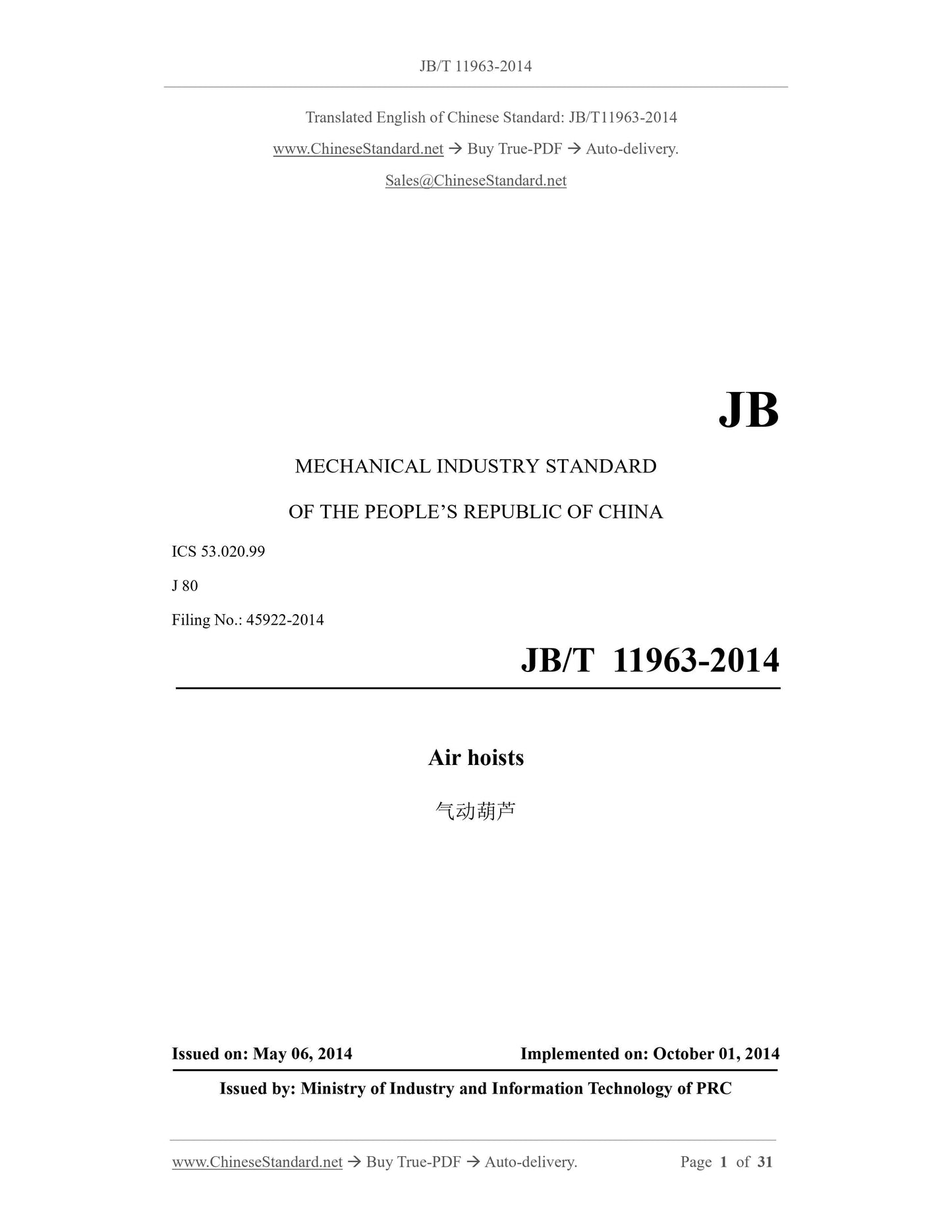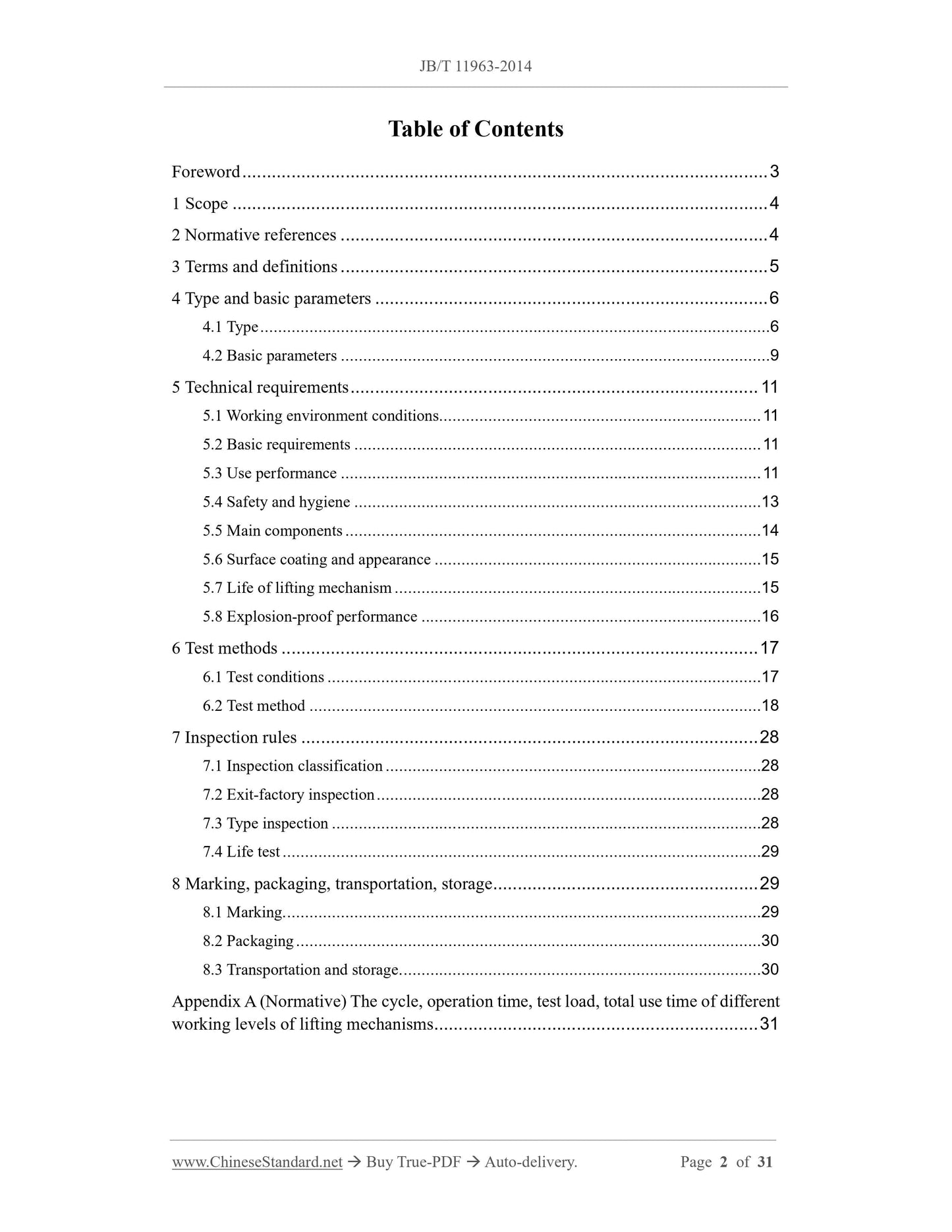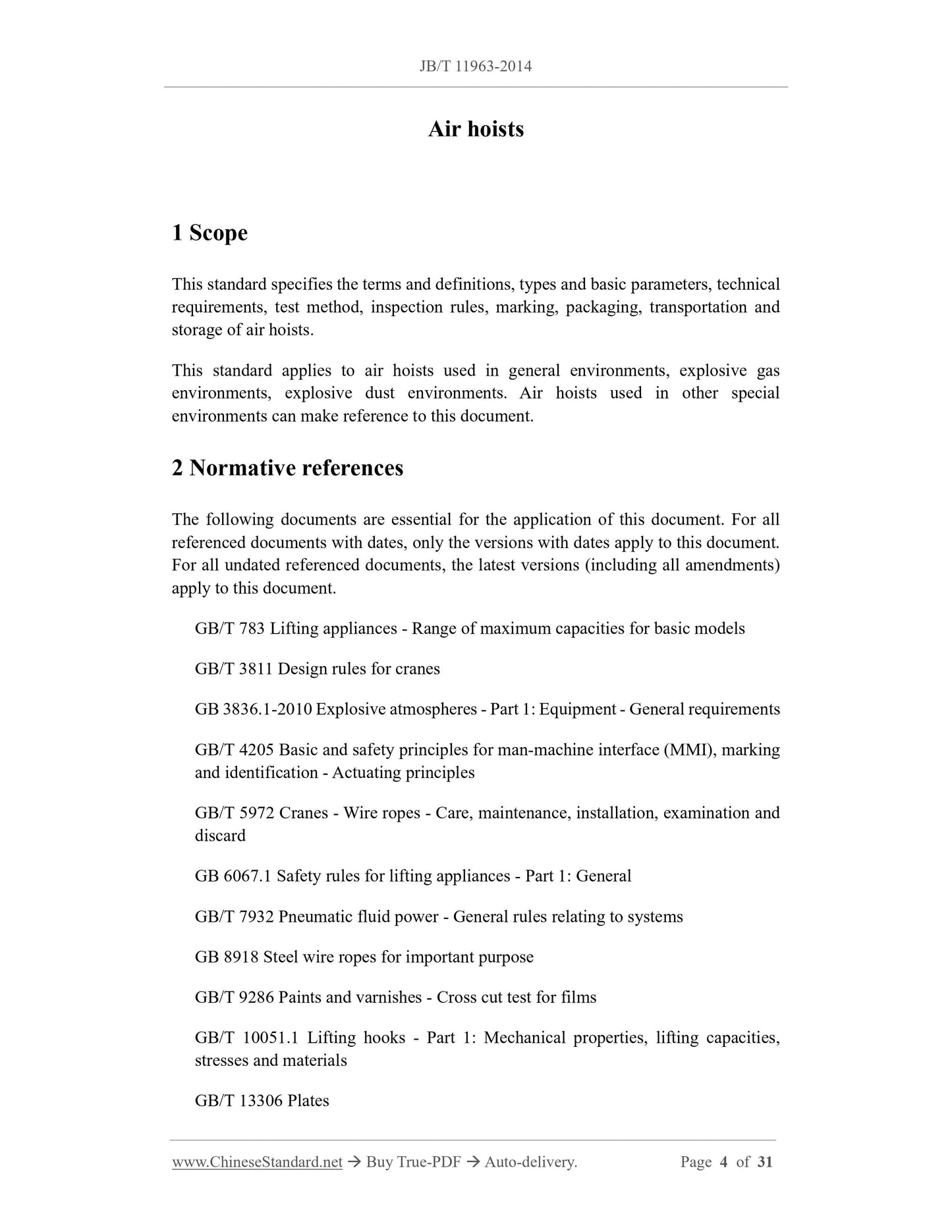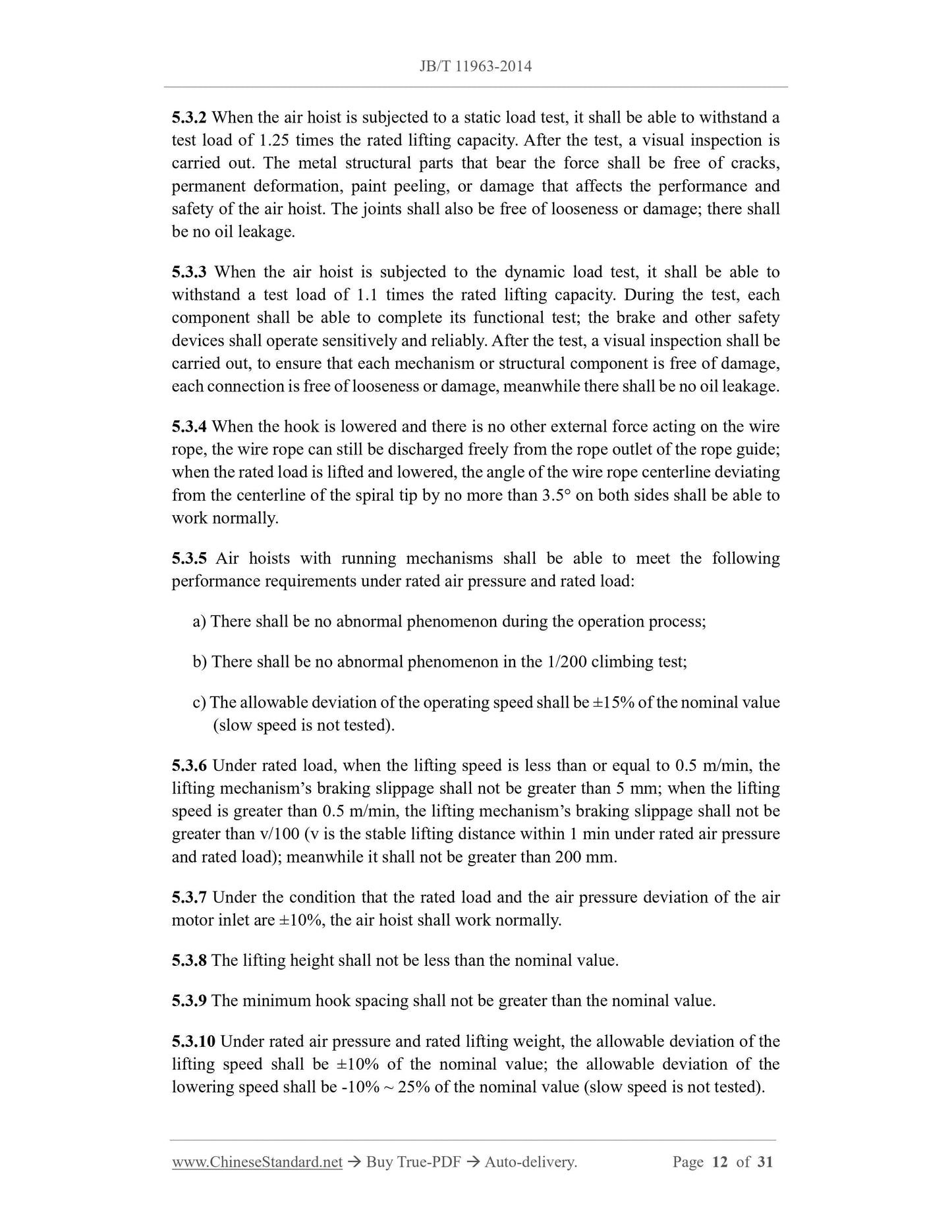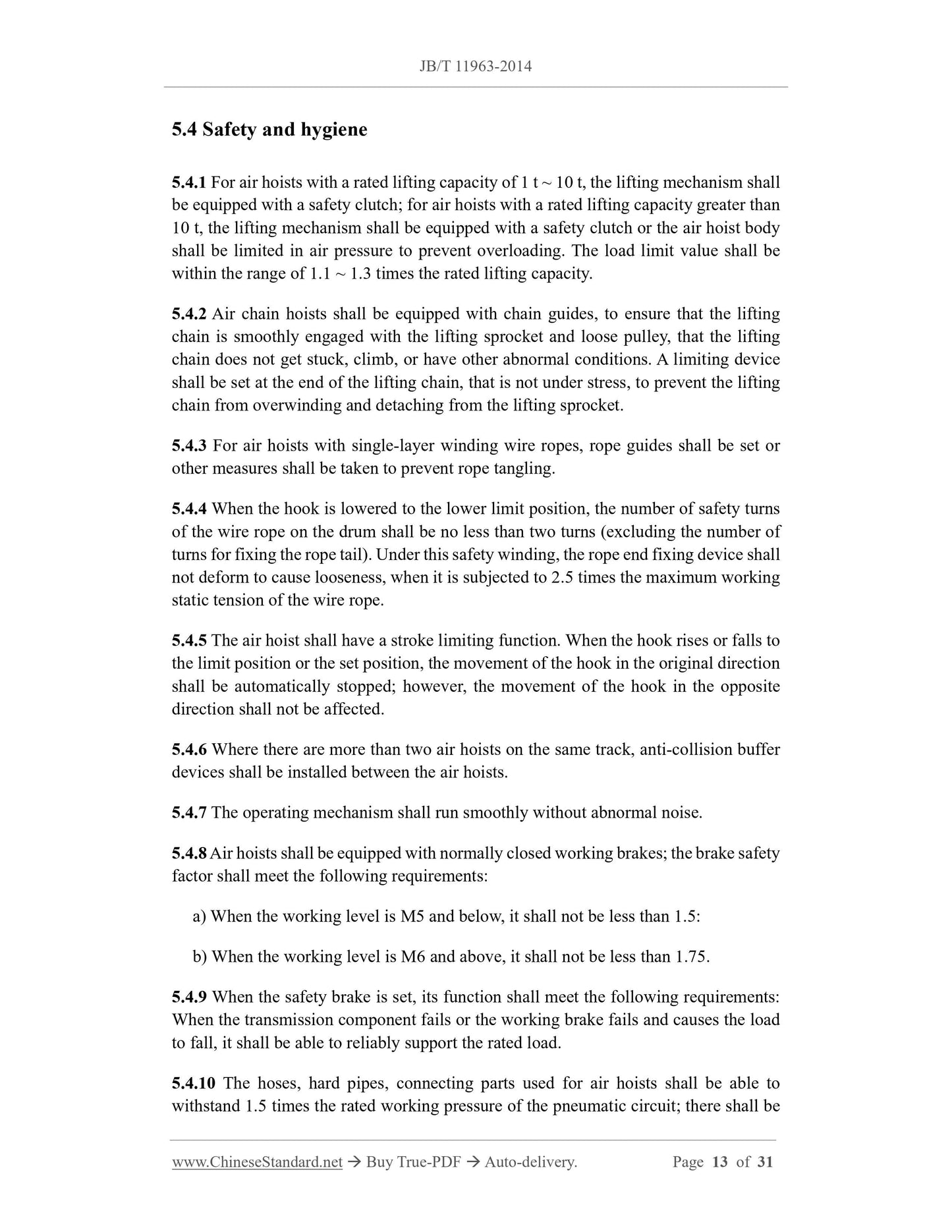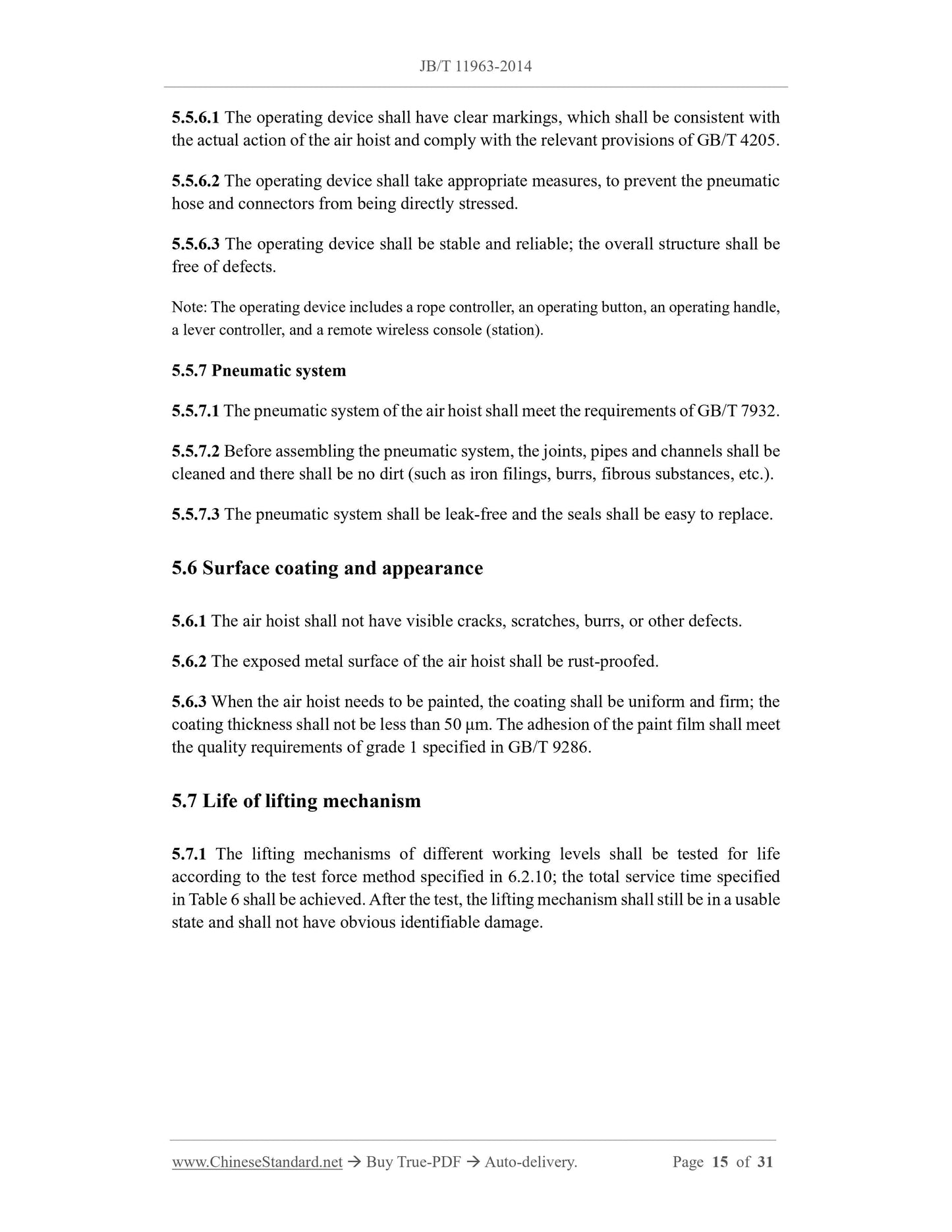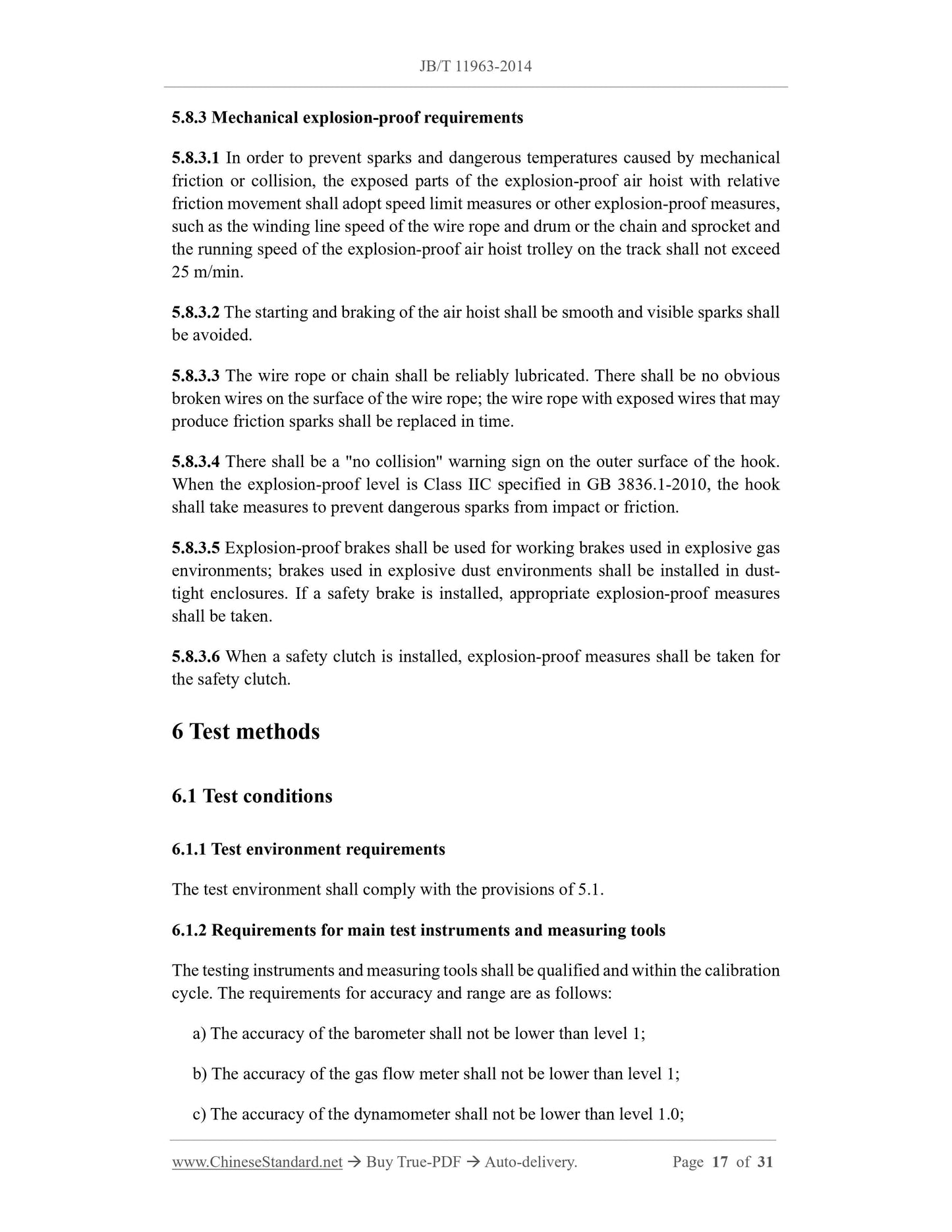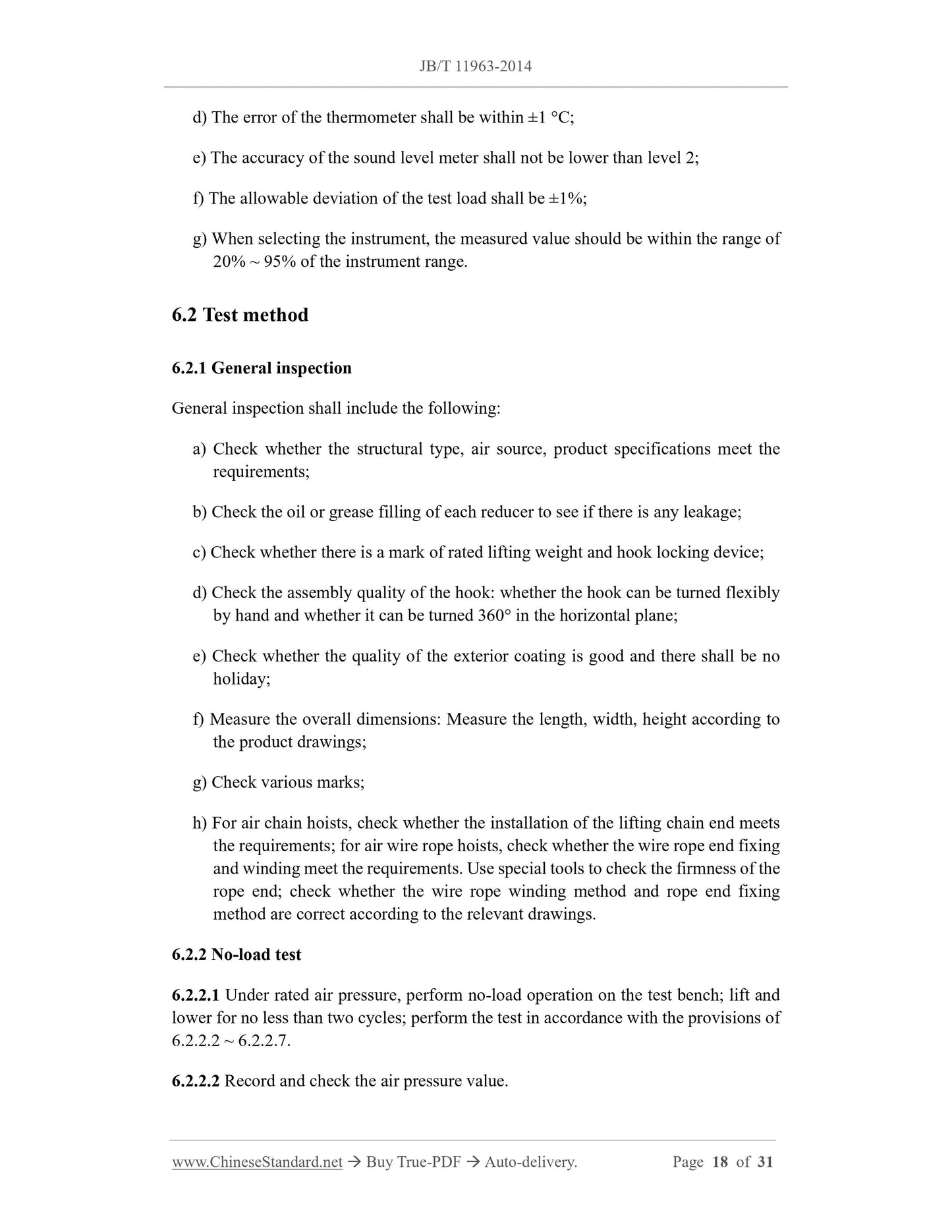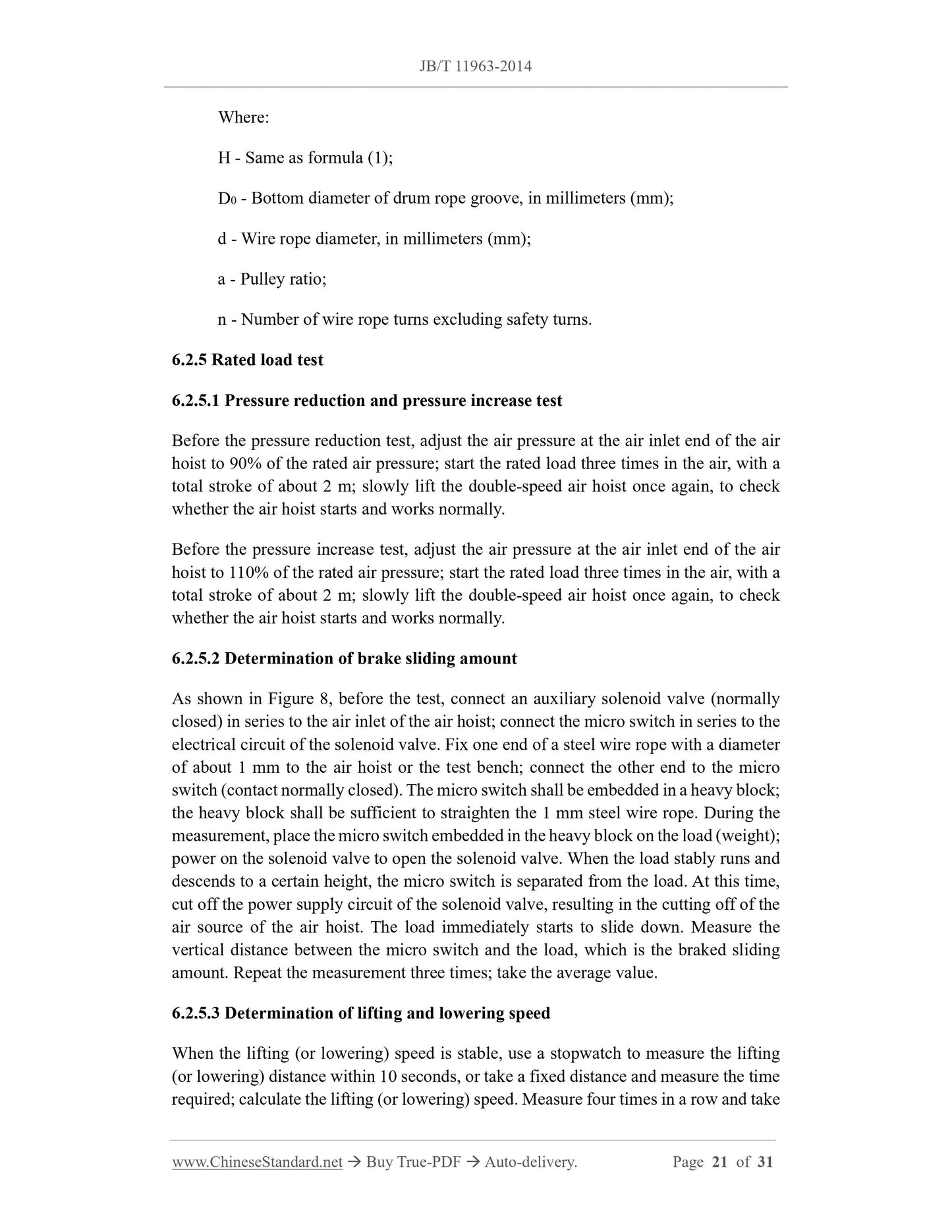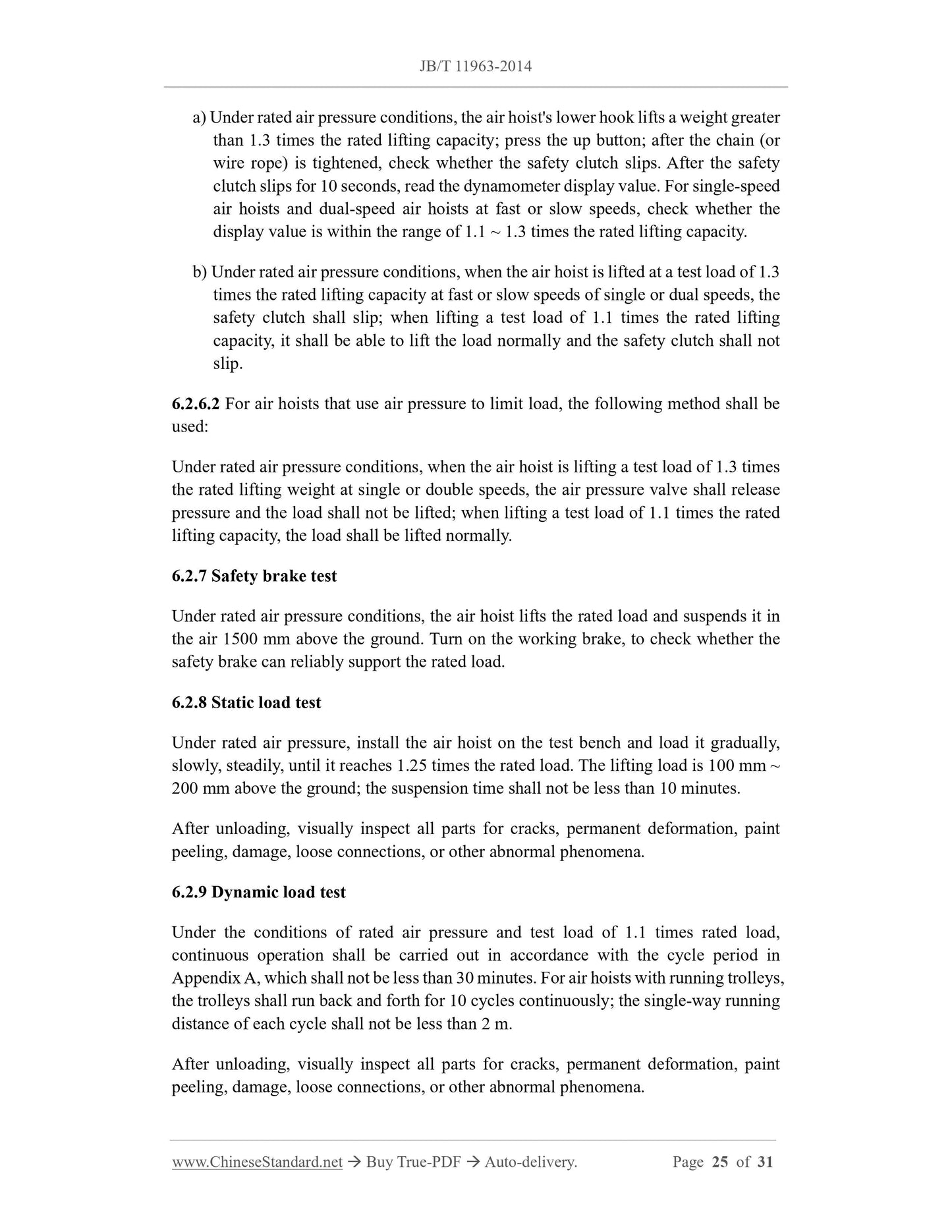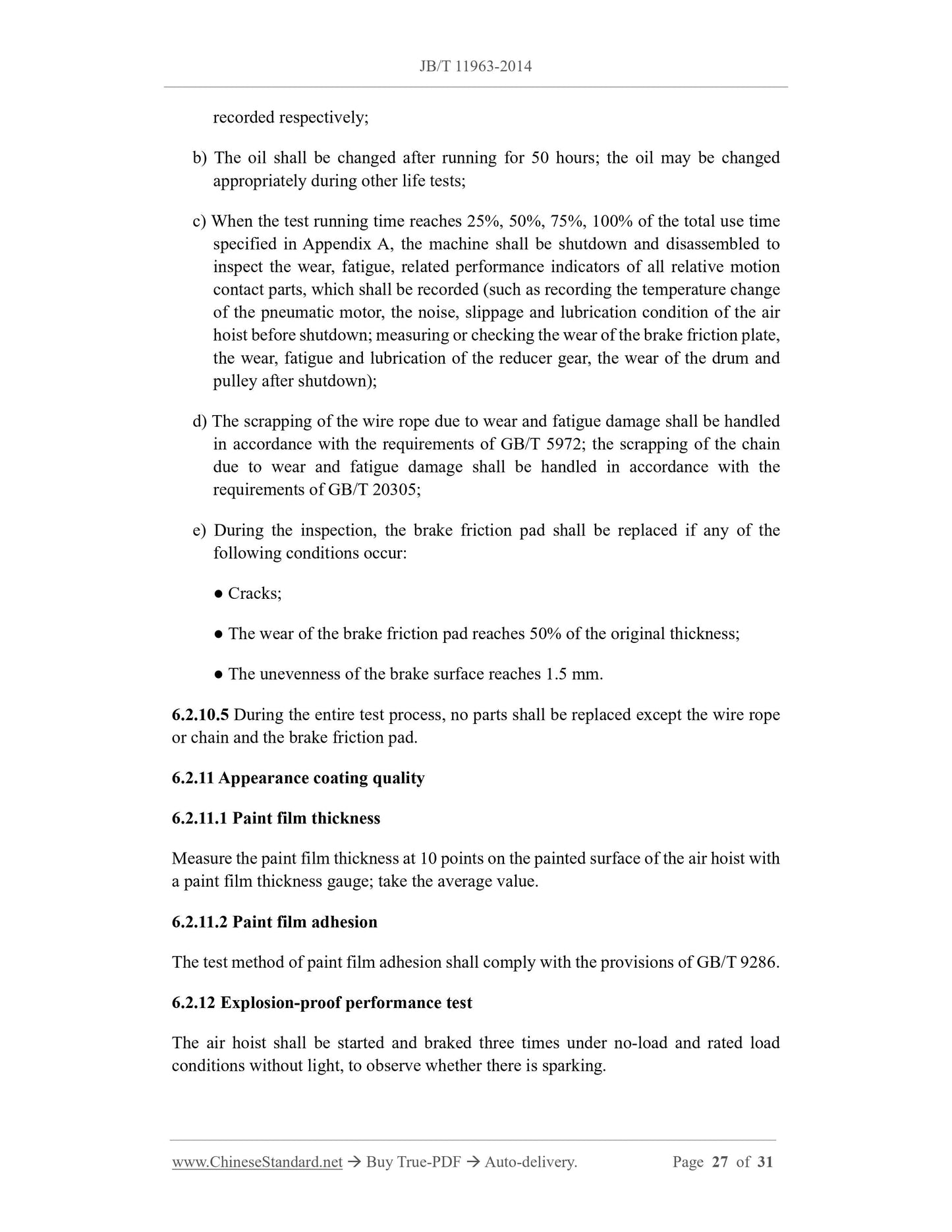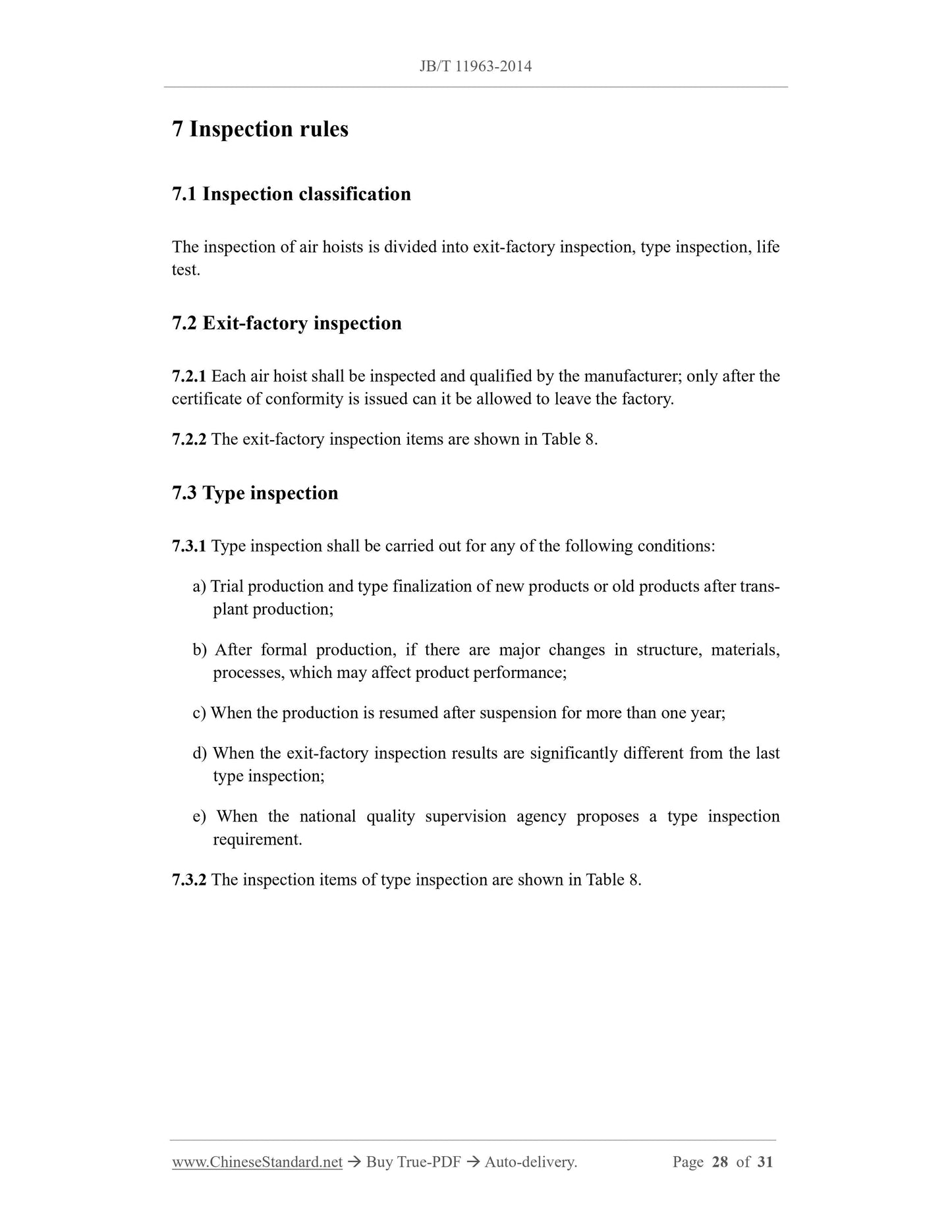1
/
of
12
www.ChineseStandard.us -- Field Test Asia Pte. Ltd.
JB/T 11963-2014 English PDF (JB/T11963-2014)
JB/T 11963-2014 English PDF (JB/T11963-2014)
Regular price
$510.00
Regular price
Sale price
$510.00
Unit price
/
per
Shipping calculated at checkout.
Couldn't load pickup availability
JB/T 11963-2014: Air hoists
Delivery: 9 seconds. Download (and Email) true-PDF + Invoice.Get Quotation: Click JB/T 11963-2014 (Self-service in 1-minute)
Newer / historical versions: JB/T 11963-2014
Preview True-PDF
Scope
This standard specifies the terms and definitions, types and basic parameters, technicalrequirements, test method, inspection rules, marking, packaging, transportation and
storage of air hoists.
This standard applies to air hoists used in general environments, explosive gas
environments, explosive dust environments. Air hoists used in other special
environments can make reference to this document.
Basic Data
| Standard ID | JB/T 11963-2014 (JB/T11963-2014) |
| Description (Translated English) | Air hoists |
| Sector / Industry | Mechanical and Machinery Industry Standard (Recommended) |
| Classification of Chinese Standard | J80 |
| Classification of International Standard | 53.020.99 |
| Word Count Estimation | 23,239 |
| Date of Issue | 5/6/2014 |
| Date of Implementation | 10/1/2014 |
| Quoted Standard | GB/T 783; GB/T 3811; GB 3836.1-2010; GB/T 4205; GB/T 5972; GB 6067.1; GB/T 7932; GB 8918; GB/T 9286; GB/T 10051.1; GB/T 13306; GB/T 13384; GB/T 20118; GB/T 20305; GB/T 20947; JB/T 5967-2007; JB/T 7737; JB/T 8110.2; JB/T 10863 |
| Regulation (derived from) | Ministry of Industry and Information Technology - Announcement 2014 No 32; Industry standards for filing notice 2014 No. 6 (total 174). |
| Issuing agency(ies) | Ministry of Industry and Information Technology |
| Summary | This Standard specifies the terms and definitions pneumatic hoist, types and basic parameters, technical requirements, test methods, inspection rules, marking, packaging, transportation and storage. This Standard applies to the general environment, explos |
Share
